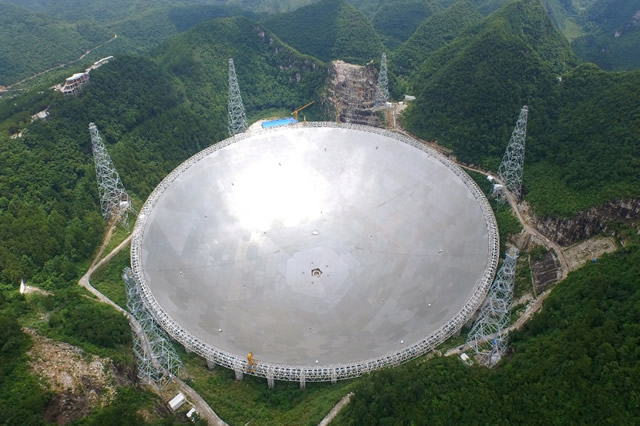Top 10 Astronomical Telescopes Worldwide, Inventory of the World’s Most Famous Space Telescopes.
-
Webb Space Telescope (JWST)
The Webb Space Telescope, also known as JWST, is an extraordinary feat of human ingenuity, standing as the most sophisticated, powerful, and largest space telescope ever crafted. Its primary mirror measures 6.5 meters in diameter and weighs 7 tons, making it the largest mirror ever flown in space. With a price tag of approximately $10 billion, JWST’s groundbreaking capabilities include exploring the universe’s first stars and galaxies formed after the Big Bang, studying galaxy formation and evolution, comprehending star and planetary system formation, and investigating planetary systems’ origins and the potential for life. -
RATAN-600 Radio Telescope
The RATAN-600 radio telescope is an impressive radio astronomy observatory featuring a 576-meter-diameter reflecting surface in the form of a peripheral ring. Situated in the Karachay-Cherkess Republic within the Russian Federation, it conducts sky scans through the Earth’s rotation, allowing for stellar radio observations. -
China Sky Eye (FAST)
China Sky Eye, also known as FAST, is a monumental leap in radio astronomy. With a 500-meter-caliber spherical radio telescope, equivalent to 30 football fields in reflecting surface area, it is one of the world’s largest single-aperture radio telescopes. Located in Guizhou Province’s Pingtang County, FAST features an active reflection surface covering the entire sphere, making it a remarkable achievement in astronomical advancements. -
Hubble Space Telescope
Launched in 1990 aboard NASA’s space shuttle Discovery, the Hubble Space Telescope has garnered unparalleled fame as one of the most pivotal astronomical telescopes in human history. While its successor, JWST, boasts superior infrared resolution and sensitivity, Hubble excels in visible and ultraviolet observations, providing invaluable insights into the cosmos. -
Very Large Array (VLA)
The Very Large Array comprises 27 antennas, each with a 25-meter diameter, making it the world’s largest synthetic aperture radio telescope. Operated by the National Radio Astronomy Observatory (NRAO) in the United States, VLA’s exceptional resolution allows for various observation tasks, including radio spectral line studies and very long baseline interferometry. -
Sky Survey Space Telescope (Xuntian)
Xuntian, part of China’s space station construction plan, is a pioneering large-scale space telescope combining a sky survey optical facility and platform. Its field of view is over 300 times that of the Hubble Telescope, and its substantial size enables low-Earth orbit operations at an altitude of about 400 kilometers. -
Gaia Space Telescope
Launched by the European Space Agency in 2013, the Gaia space telescope is positioned at the Lagrange L2 point, 1.5 million kilometers away from Earth. Gaia’s primary mission involves observing and mapping the positions and movements of approximately 1 billion stars in the Milky Way, contributing significantly to our understanding of the galaxy’s origin and evolution. -
Kepler Space Telescope
Designed by NASA, the Kepler Space Telescope is renowned for its groundbreaking discovery of Earth-sized exoplanets orbiting sun-like stars. Kepler’s observations have led to significant scientific breakthroughs and expanded our knowledge of exoplanetary systems. -
Arecibo Observatory
The Arecibo Observatory, managed by Cornell University, ranks among the largest single-mirror radio telescopes globally, with a diameter of 305 meters, later expanded to 350 meters. This world-famous radio astronomy observatory has attracted scientists, visitors, and even movie stars and Hollywood producers due to its iconic presence. -
Gemini Observatory
The Gemini Observatory comprises two telescopes, Gemini North in Hawaii and Gemini South on Cerro Pajon Mountain in the Chilean Andes. This global collaboration project involves seven countries (the United States, the United Kingdom, Canada, Chile, Brazil, Argentina, and Australia), making it a significant force in advancing astronomical research in both the northern and southern hemispheres.

